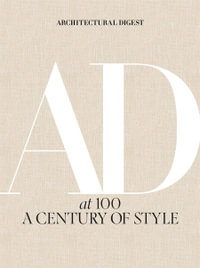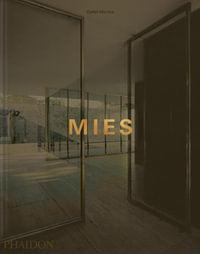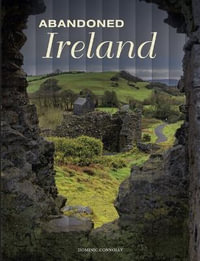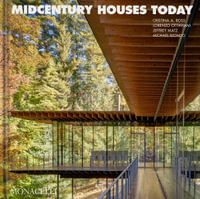"Henrik Schoenefeldt's research provides a unique insight into the development, construction, and maintenance of the Palace of Westminster. The personal, political, and engineering challenges that emerged from the early nineteenth century until today are expertly detailed and expounded upon. This research will be a vital asset as MPs and Peers evaluate how best to preserve and restore the Palace for generations yet to come."
Rt Hon Sir Edward Leigh, MP for Gainsborough
"A fascinating account of how David Boswell Reid influenced the design of the Palace of Westminster. Previous studies have tended to dismiss Reid as a crank whose grand ventilation scheme did not work, but Professor Schoenefeldt dispels that view through archival research and study of the hidden structure of the Palace: many of the "Gothic" towers and turrets of the Palace we see today were built to disguise Reid's ventilation stacks; his pioneering experiments with the temporary parliamentary chambers were highly influential on later buildings; and elements of his system remained in use for over 90 years.
Schoenefeldt also sees implications for the long-overdue restoration of the Palace. Reid understood that ventilation is the key to health and well-being in a heavily used public building and tried to maximise natural as opposed to mechanical ventilation. Two hundred years later, Reid's ideas point the way towards sustainability and low-energy design."
Dr Richard Ware, Adviser on Parliamentary Relations, Restoration and Renewal Sponsor Body
"The Palace of Westminster was an engineering tour de force completed at the height of the industrial revolution. The work of Charles Barry and A.W.N. Pugin, and of their craftsmen collaborators, has formed a cornerstone in our understanding of design history since the time of its completion. This focus on its aesthetic qualities has sometimes been to the detriment of appreciation of the Palace as a pioneering modern, fully serviced building and an outstanding technical achievement of its time. Henrik Schoenefeldt's outstanding study illuminates the history, function and performance of the heating, cooling and ventilation of the Palace of Westminster. In this book the work of the enterprising physician, Dr Boswell Reid, who designed the Palace's ventilation systems, which were largely realised in the completed building, emerges vividly as the pioneer of modern engineered building services. Schoenefeldt's work provides a new narrative on the architectural heritage of Britain's most famous building, and is particularly timely in the age of climate emergency, when the need for zero carbon solutions calls once again for new approaches to the design of conditioned environments."
Patrick Duerden, Conservation Architect and Practice Director, Donald Insall Associates
"Henrik Schoenefeldt has made fascinating discoveries of many hitherto unknown features of this complex system. Dr Reid produced one of the earliest forms of 'stack ventilation' which has until now been an underappreciated aspect of this remarkable building.
We learn how the architecture of the palace was influenced by the ventilation system and how the architect and the 'Ventilator' as Reid was known, came to disagree to the point at which the system itself had to be divided between architect and engineer.
This is a vital study of the inner workings of a building which is being analysed overall in preparation for a major programme of refitting, repair and conservation. It will be interesting to see which - if any - of Reid's original principles, either of a mechanical or natural type, explained so clearly here by Dr Schoenefeldt, could be adopted in the forthcoming programme of works."
Adam Watrobski, Principal Architect of the Houses of Parliament
"Having been shown by Henrik Schoenefeldt at first hand several of the original flues and passageways and how they were used, I have eagerly awaited this book. It succeeds on all levels. He has investigated dozens of ventilation ducts, how they work, how they were operated, and who operated them. One of the intriguing discoveries was the surprisingly modern concept of seeking 'feedback' from MPs and Peers post-occupancy to inform how the system was functioning.
The ventilation system has always been hidden because the intention was to conceal every vestige of the thousands of flues, the steam engines, fans and even the air inlets and outlets by using the glorious decorative detail covering every surface. By employing the latest BIM modelling, the original features of the system, even those parts since lost - including those for the original Commons Chamber destroyed during the Second World War - may now be fully appreciated."
Dr Mark Collins, Estates Archivist at the Houses of Parliament
"It was fascinating to read Prof Schoenefeldt's book and to encounter one of the major monuments that any professor of architectural history teaches to his or her students from different perspectives, revealing a completely rich new story about the evolution of that building and also one that challenges larger concepts of how we think about the evolution of architecture in the modern period and the industrial revolution. Even the non-architectural reader will find this account fascinating because it is history of a long-term experiment and the book itself is an experiment of how one might write history of buildings and histories of users of buildings, which suggests the complexity of building modern buildings from different expertises. It is part of Schoenefeldt's account of the emergency of the dialogue of expertises that were needed to create a major public building in the modern period.
An extraordinary work of scholarship is Schoenefeldt's own experimentation with, we might say, resolving the bifurcation of the history of architecture and history of science, which are not in total conflict but often in dialogue. The whole way we thought of this building as right the opposite of the rise of functionalism in British factories of the early nineteenth-century, is in a sense challenged by Schoenefeldt's extraordinary research and argumentation. I admire the way he reveals to us is that this history is not simply an arcane exercise in understanding the first half of the nineteenth century, but is rather relevant to our current period in which we once again require rigorous debates and rigorous experimentation on what is the relationship between the design of buildings and the creation of environmentally responsible places for work, in particular in relation to our environmental crisis."
Professor Barry Bergdoll, Columbia University, New York
"It is an extraordinary book, which I am convinced, constitute a landmark in the field of history of architecture and the history of environmental systems.
It is a very detailed examinations for a period of nearly a hundred years of the development of the ventilation of the Houses of Parliament, with a focus on the early period when the architect Charles Barry and the ventilation scientist David Boswell Reid, sometimes separately, sometimes together were developing the ventilation system. It is an impeccable and thoroughly piece of scholarship. Henrik spent nearly 10 years in the archives, which he analysed scrupulously and in a most concentrated fashion.
He is giving us simply an extraordinary story, narrowly focused on the design and construction of the ventilation system, in fact probably because it is narrowly focused and detailed, he is able to show how it intersects with a multitude of aspects of the Victorian period. It is a history of environmental systems, especially the history of competing systems, mechanical versus natural stack. It is also a detailed post-occupancy history of the parliament building. This is rare. Architectural historians tend to concentrate on the design itself, but they don't follow through after the design and that is what Henrik is given us. It is a history of post-occupancy evaluation itself, because the Houses of Parliament was unique in that has always been monitored after the design and construction. "
Professor Martin Bressani, McGill University, Montreal.
"This work is a original scholarship that has clear relevance for the Restoration and Renewal Programme. Much is known of the work of Charles Barry and Augustus Pugin in the design of the Palace of Westminster, but this focus tends to overshadow the work of David Boswell Reid and the importance of environmental design, dealing with key issue such as ventilation, air quality and energy efficiency. Those of us who are contemporary users of the building are acutely conscious of some of the problems arising from maintaining air flow and heating and how the many flues are now used. The book draws out splendidly issues that have a current resonance and need to inform the deliberation of the restoration programme, not the least in terms of sustainability and low-energy design. Such consideration have informed the Senedd in Cardiff Bay, but that is a new building. The challenge especially acute in restoring a Grade 1 listed building that is a world heritage site. Henrik Schoenefeldt has done a superb job of combining archival research with his professional expertise to produce a major work, rich in detail, analysis and illustrations. It identifies the conflict and challenges in designing the Palace and the extent to which the work drew pioneering experiments as well as the novelty of seeking feedback from users. The study is one that could not be better timed, identifying ways to proceed as well as how not to proceed as we move to restoring the jewel in the crown of this nations' parliamentary history. "
Lord Norton of Louth, Member of the House of Lords and Professor of Government, University of Hull
























